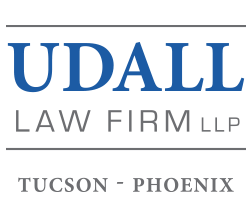Closing a Shopping Center Donation to a Charity Combined with a Trade (1031 Exchange) of out of State Commercial Property
Jeffrey M. Neff and Debra Boyer just completed a complex real estate transaction for a charity. It was really three deals rolled into one.
A donor wanted to give a shopping center, worth several million dollars to a charity. Jeff and Debra represented the charity. The charity then sold the property to a third party as soon as it received it.
Part 1 of the real estate transaction was the transfer to the charity. Since charities don’t normally operate shopping centers, the charity had to be protected from any possible liability that might arise from the donation of the property. The first step was to create a limited liability company (LLC) to hold the donation after receipt of the donation. The charity was the sole member of the LLC. This effectively insulated the charity from liability arising from the property until the property could be sold.

The next steps for insulating the charity from liability was to order a Phase I environmental report, a physical inspection, obtain estoppel certificates from the tenants (to make sure the charity didn’t inherit a claim), the clearing up of several liens on the property (paid loan but the releases were never recorded), review of the management agreement, tenant leases, schedule of security deposits and other due diligence items. Along with these protective steps, escrow instructions and contracts were prepared that contained various exculpatory provisions, insurance provisions, etc.
Part 2 of the transaction was a sale to an out of state investor. The down payment was a note held by a third party out of state exchanger as part of a prior 1031 exchange. This required working with a third Party 1031 Exchange facilitator who was holding title to the note secured by real property in another state. This note was used as a down payment. The property had to be transferred to the charity. The note had to be endorsed to the charity and the deed of trust securing it assigned. A non-recourse assignment was used to protect the charity from liability on the note.
Part 3 of the real estate transaction was the sale of the note. The sale of the note ensured that the charity received all its money immediately. In that sale, the note had to be physically obtained from the out of state Third Party 1031 Exchange Facilitator who held it, and assigned to charity.
All of this was an intricate series of steps that needed to be accomplished before the end of the year.
Jeffrey M. Neff is a real estate specialist certified by the Arizona Board of Legal Specialization. Debra C. Boyer is a real estate lawyer who has over twenty years of experience in real estate transactions, condemnation, zoning and litigation.

